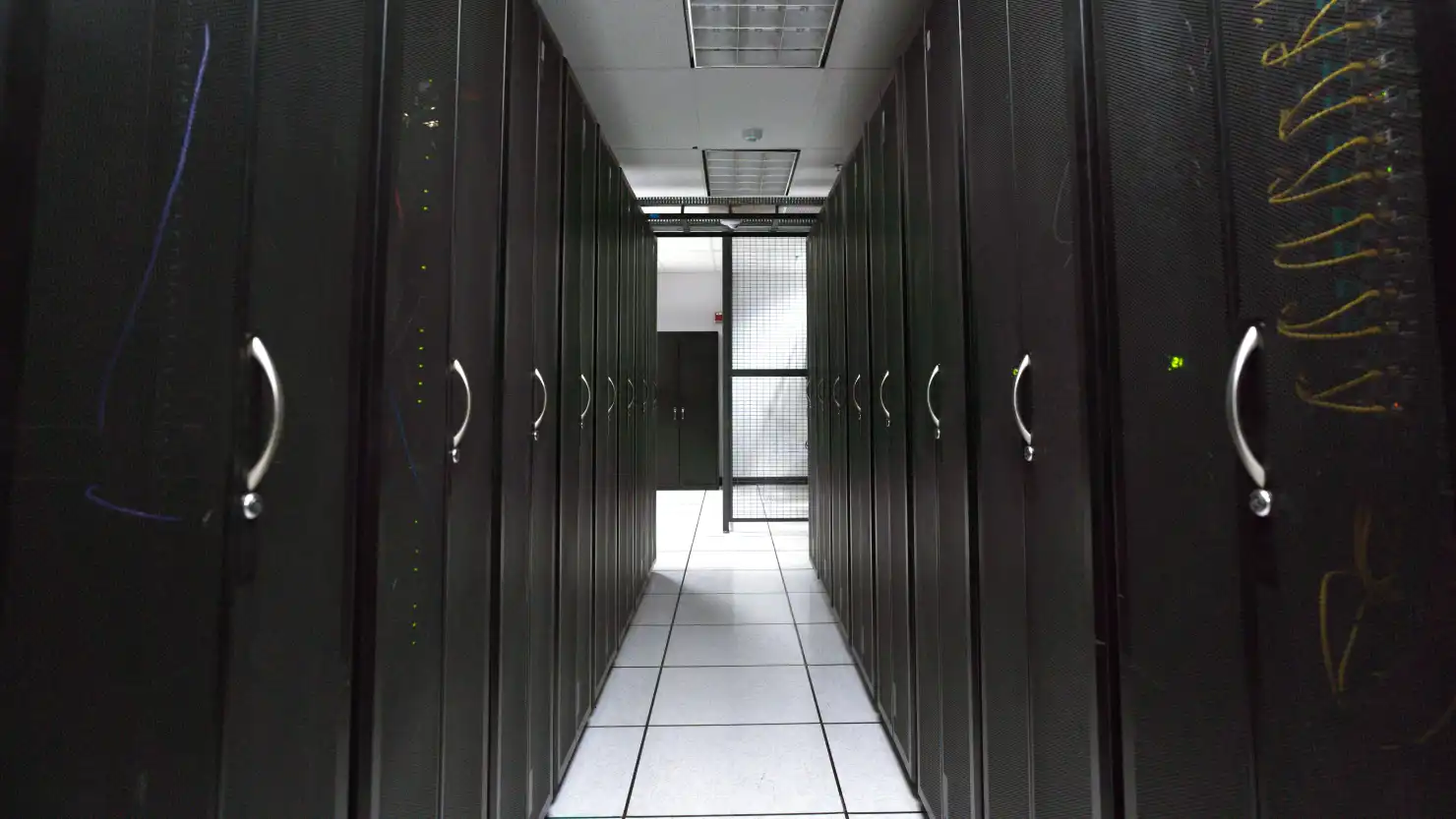How should businesses host their computing and data infrastructure—which way is best? On approach is data center colocation, where companies utilize third-party facilities for server hardware and networking. On the other hand, in-house hosting grants firms complete control over their own servers located on-premises. Each presents unique advantages and challenges that can significantly impact performance and cost efficiency.

Making an informed choice between colocation and in-house hosting isn’t just about technology—it’s about aligning your decision with your business goals. Factors such as scalability, security, maintenance burdens, and budget constraints all play pivotal roles in determining which route will best serve your organization’s current and future needs. As we dive deeper into this comparison, you’ll discover fresh insights into how each option operates and what really sets them apart in the evolving world of IT management. Whether you’re an IT professional or a business owner looking to optimize resources, understanding these intricacies will empower you to make a smart choice that enhances operational effectiveness. This understanding will give you the confidence to navigate through the complexities of data center solutions.
Understanding Data Center Colocation
Data center colocation, a practice where an organization’s servers and other hardware are housed in a third-party facility, offers unique advantages. Businesses rent physical space within a data center that provides power, cooling, security, and network connectivity. Unlike traditional hosting services, colocation allows companies to maintain control over their own hardware while benefiting from the robust facilities offered by specialized providers. This setup is particularly appealing for businesses aiming to scale their operations without the burdens of managing physical devices at their own premises.
Data center colocation providers offer varying service levels and diverse geographical footprints, allowing clients to select facilities based on their specific needs — proximity to customers or access to critical infrastructures like major internet exchange points. Moreover, many colocation centers boast high-density configurations that support advanced technology stacks necessary for modern business applications.
Colocation is typically utilized by organizations seeking reliability and resilience in their IT strategies. Companies may leverage these services for low-latency environments that require substantiated uptime guarantees and rapid data retrieval speeds. Any organization needing partial or complete infrastructure independence while tapping into state-of-the-art facilities can find value in deploying a data center colocation strategy.
Exploring In-House Hosting
In-house hosting, often called on-premises hosting, involves deploying and managing servers and applications in a company’s physical facility. This model gives organizations complete control over their data, hardware, and software configurations. They typically own and manage networking systems and oversee all security measures. While this creates an environment tailored to specific needs, it also imposes greater responsibility on IT teams tasked with ensuring high availability and performance.
The requirements for effective in-house hosting can be extensive. Beyond servers and storage devices, organizations must invest in robust infrastructure that typically includes networking gear such as routers and switches, adequate cooling mechanisms to prevent overheating, and uninterruptible power supplies (UPS) for reliability during outages. Furthermore, software licensing costs, maintenance contracts for hardware upgrades or replacements, and staffing skilled IT professionals add layers of complexity. For many companies—especially startups or small businesses—this initial investment may be daunting compared to opting for colocation services.
Despite its challenges, in-house hosting has distinct advantages, making it an appealing choice for specific sectors. Businesses with strict compliance requirements—such as financial institutions or healthcare providers—often prefer in-house solutions because they allow direct oversight of sensitive data handling processes. Also suited for industries requiring low-latency access to resources, in-house setups can minimize latency issues arising from external data center distance or routing difficulties.
Ultimately, while in-house hosting may not be the best fit for everyone due to its resource-intensive nature during setup and upkeep stages, certain organizations flourish under this model by leveraging complete control over operational aspects. This approach enables custom configurations tailored specifically toward unique business workflows—which might not always be possible through third-party services—and fosters a sense of ownership over significant technological investments.
Cost Considerations: Colocation vs. In-House Hosting
When weighing the costs of data center colocation against in-house hosting, it’s essential to understand both the initial investments and ongoing operational expenses associated with each option. With in-house hosting, businesses often face significant upfront costs. In addition to servers and data storage devices, they need to provide networking equipment and additional hardware and may need to invest in specialized cooling systems and uninterruptible power supplies (UPS) to ensure reliable functionality.
On the flip side, colocation can present a more balanced initial investment structure. Businesses will pay for rack space and power within an established data center facility instead of bearing all capital expenditures related to infrastructure. This allows them to benefit from state-of-the-art facilities and redundant power sources without incurring excessive startup costs. While upfront payments for colocation still exist—like setup fees or initial monthly charges—they are generally less than assembling an entire IT infrastructure from scratch.
Ongoing operational expenses must also be evaluated carefully. In-house hosting appears cheaper on paper with no recurring colocation fees; however, hidden costs can quickly escalate if maintenance issues arise or substantial infrastructure upgrades are required as technology evolves. Alternatively, colocation services often offer predictable monthly pricing, including essentials like power consumption and internet connectivity.
While both options have unique financial implications, assessing potential hidden fees is crucial before making a final decision. Data centers could impose extra charges for power overages or bandwidth usage exceeding plans, while in-house setups may suffer unexpected repair bills if technical expertise isn’t available on staff. Hence, conducting thorough research into all possible variables can help organizations make informed financial choices that align with their longer-term strategies without falling prey to unforeseen budgeting pitfalls down the line.
Scalability and Growth Potential
When it comes to scalability, data center colocation offers a compelling advantage by enabling businesses to grow without the burden of substantial upfront investments. Companies can rent additional space, power, and networking capacity in a colocation environment, scaling up or down as needed based on fluctuating demand. This agility allows tech firms to react swiftly to market changes without encountering bottlenecks related to physical infrastructure.
On the other hand, in-house hosting often presents limitations when it comes to scaling operations efficiently. Businesses that have built a hosting infrastructure with a fixed or limited capacity may find themselves trapped in an inflexible system where expanding requires significant financial commitment and time-consuming installations. For instance, a local retailer attempting to build an e-commerce platform may have initially underestimated server demands. If their growth outpaces projections and they need additional capabilities quickly, upgrading internal infrastructure can lead to delays that impact customer experience—perhaps even resulting in lost sales opportunities.
Future-proofing is crucial for both options; however, the routes differ substantially. Companies using colocation services can leverage the infrastructure available through their providers without needing frequent upgrades on their end. Major colocation facilities continuously invest in state-of-the-art equipment and support services, allowing clients access to advanced offerings while maintaining a focus on core business tasks. Conversely, businesses with in-house hosting must regularly assess technological trends and make deliberate investment decisions – assuming they can do so.
Evaluating scalability is vital for making informed decisions about infrastructure management strategies. The flexibility offered by colocation facilitates easier expansion aligned with business growth trajectories, which can be especially meaningful for startups looking at long-term viability and success. In contrast, organizations opting for an in-house solution might want to consider both current needs and anticipated future shifts in tech requirements before committing to a plan that could hinder rather than help them adapt over time.
Security Implications for Each Option
When it comes to security, the choice between data center colocation and in-house hosting can significantly impact how well a business protects its sensitive information. Colocation services typically come equipped with robust security features that exceed what many businesses could feasibly implement on their own. Leading providers often utilize state-of-the-art physical security measures such as biometric access controls, 24/7 surveillance, and redundant power sources to ensure that infrastructure is secure and resilient against attacks or failures. Additionally, these data centers are staffed with experienced personnel whose focus is solely on maintaining optimal security standards—something that can be difficult for an internal IT team to manage while juggling other responsibilities.
On the other hand, in-house hosting presents challenges that may complicate efforts to ensure stringent security measures. Organizations managing an on-premises infrastructure might lack the expertise or resources to establish comprehensive defenses against evolving cyber threats. Recent trends in ransomware attacks have shown increasing sophistication, requiring extensive knowledge of current cybersecurity protocols—something not all organizations possess. Moreover, the potential for human error during routine maintenance can lead to vulnerabilities; a misconfigured firewall or unsecured server could expose sensitive data more readily than one housed in a highly-secured colocation facility.
Compliance considerations further complicate the landscape for both options. Businesses must adhere to industry regulations regarding data protection—such as GDPR in Europe or HIPAA in healthcare—which necessitates encryption policies and audit trails, among other requirements. Colocation facilities often provide tools and processes that assist businesses in achieving compliance more efficiently by offering built-in audit capabilities and standardized reporting practices. Conversely, companies opting for in-house solutions must create their own compliance frameworks from scratch, which can be resource-intensive and prone to oversight without dedicated security teams focused solely on these tasks.
In summary, while both colocation services and in-house hosting present unique advantages and challenges concerning data security, the difference often lies in expertise and resource availability. Colocation’s inherent advantages—including advanced technologies and specialized staff—offer peace of mind for businesses looking to safeguard their critical assets. In contrast, successfully securing an in-house environment requires careful planning and constant vigilance, a challenging task for any organization operating outside its core competencies.
Management and Maintenance Needs
When it comes to the management and maintenance of data infrastructure, the requirements for colocation services differ significantly from those of in-house hosting. Colocation often means partnering with a provider that handles much of the heavy lifting related to physical infrastructure. This includes power management, cooling systems, fire suppression technologies, and physical security measures. The provider typically ensures optimal environmental conditions for server performance while allowing businesses access to their servers remotely. IT departments primarily focus on managing software, applications, and network configurations in this scenario rather than day-to-day hardware concerns.
On the other hand, in-house hosting places the full weight of management responsibilities on the organization itself. Businesses must dedicate time and expertise to every aspect of their infrastructure. This can demand a substantial commitment from your technical team—especially as technology evolves rapidly. An internal team is needed for initial setup and ongoing maintenance tasks, such as troubleshooting network issues or effectively calibrating performance metrics.
Ultimately, decision-makers should assess their organization’s capabilities alongside future growth plans before committing to either option. For instance, a rapidly expanding business might find it more efficient to partner with a colocation service that delivers scalable solutions without requiring immediate enhancements to internal resources. In contrast, an established enterprise with experienced staff might capitalize on an in-house solution tailored to its operational nuances. Balancing these factors will play a significant role in determining which approach aligns best with both short-term needs and long-term goals.
Performance Metrics: Speed and Reliability Comparison
When evaluating the performance capabilities of data center colocation versus in-house hosting, uptime guarantees play a crucial role in determining which option might suit your business needs better. Colocation facilities typically offer high uptime guarantees—often upwards of 99.999%—ensuring businesses have continuous access to their hosted data and applications. This level of reliability is often backed by Service Level Agreements (SLAs). In contrast, while in-house solutions can achieve similar levels of uptime, they rely heavily on the availability of internal resources and proactive management practices. Any operational hiccups or equipment failures can lead to costly downtimes and negatively impact business continuity.
Latency is another critical factor to consider when comparing these two hosting environments. Colocation often comes with the advantage of being strategically located near major network hubs, allowing for faster connections between infrastructure services than most in-house setups could manage. Furthermore, many colocation providers invest in cutting-edge technology and infrastructure explicitly designed to minimize latency.
In conclusion, when it comes to speed and reliability metrics like uptime and latency, colocation usually has the upper hand over traditional in-house hosting solutions owing mainly to specialized resources available within facilities designed for optimal performance. Businesses must weigh these performance factors while considering how virtual interactions can impact user experience—a vital element as more organizations depend on technology-enhanced service delivery now than ever before.
Making the Right Choice: A Decision-Making Framework
When deciding between data center colocation and in-house hosting, aligning your choice with business goals is critical. Start by assessing your organization’s current and future needs, including data storage requirements, bandwidth demands, and budget constraints. For instance, if your company is experiencing rapid growth or expects fluctuating resource demands due to seasonal spikes, colocation might provide flexibility without requiring significant upfront investment for scaling infrastructure. This consideration enhances operational efficiency and aligns IT strategies with broader organizational objectives.
To evaluate specific needs effectively, consider employing tools such as SWOT analysis (Strengths, Weaknesses, Opportunities, Threats) or case studies from similar businesses in your industry. For example, a mid-sized e-commerce company facing server downtime during high-traffic periods could analyze how transitioning to a colocation facility improved its uptime rates compared to its previous in-house setup. Additionally, exploring centralized management software can help quantify performance metrics like latency and uptime guarantees between both options—providing valuable insights tailored to your organization’s unique circumstances.
Engaging stakeholders throughout this decision-making process cannot be overstated. Communication with team members across various departments—from IT managers to finance executives—will facilitate a more comprehensive understanding of expectations and limitations associated with either option. Gathering input from all relevant parties, you can build consensus around the chosen solution that resonates most closely with the organization’s goals. For example, having user feedback on performance issues related to data access speeds can steer discussions toward solutions that address those pain points effectively.
Ultimately, making an informed decision about colocation versus in-house hosting requires careful analysis of business objectives and stakeholder engagement while leveraging appropriate evaluation tools. By taking these factors into account early in the decision-making process, organizations position themselves for long-term success amid an ever-evolving technology landscape and data management practices.
Final Thoughts: Making the Right Choice for Your Business
Choosing between data center colocation and in-house hosting is no minor consideration. Each option comes with its own set of advantages and challenges. Colocation offers scalability, enhanced security, and often a lower total cost of ownership. In contrast, in-house hosting may give your team greater control but can require substantial ongoing investments and expertise. As you weigh these factors, consider how each solution aligns with your business goals.
It’s essential to evaluate your specific needs carefully. Engage stakeholders across your organization to create a well-rounded perspective on what will work best for you. Finally, keep an eye on emerging trends in data management technologies that may influence your decision. The right choice today can set the foundation for future growth and success in an ever-evolving digital landscape.







